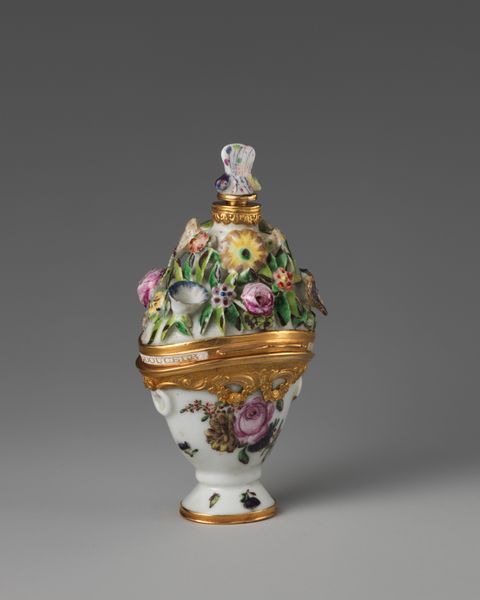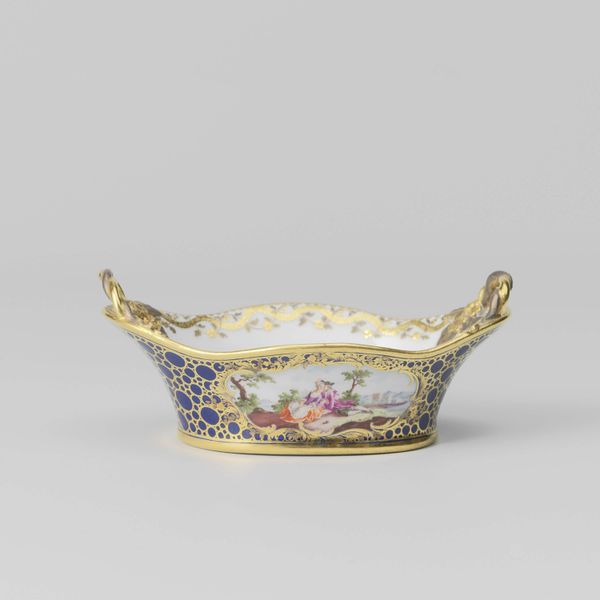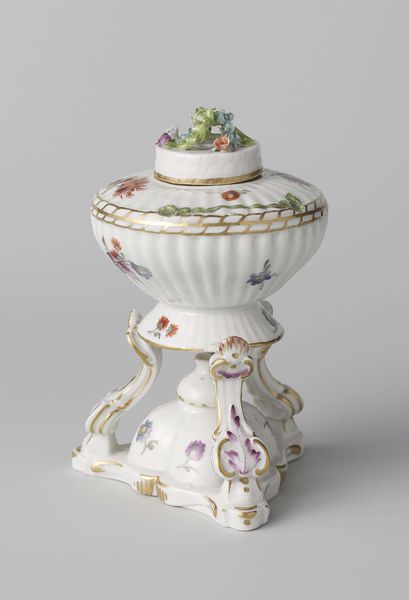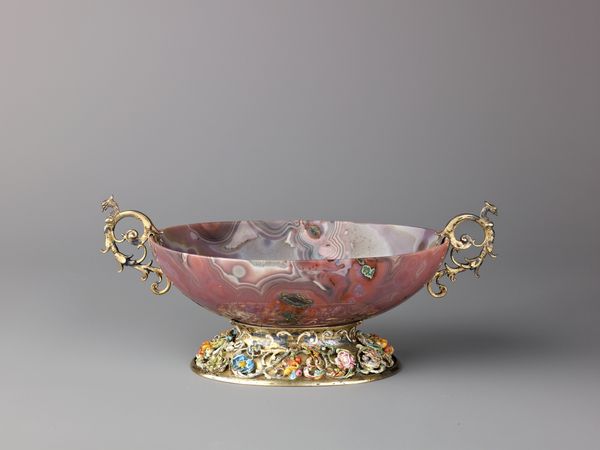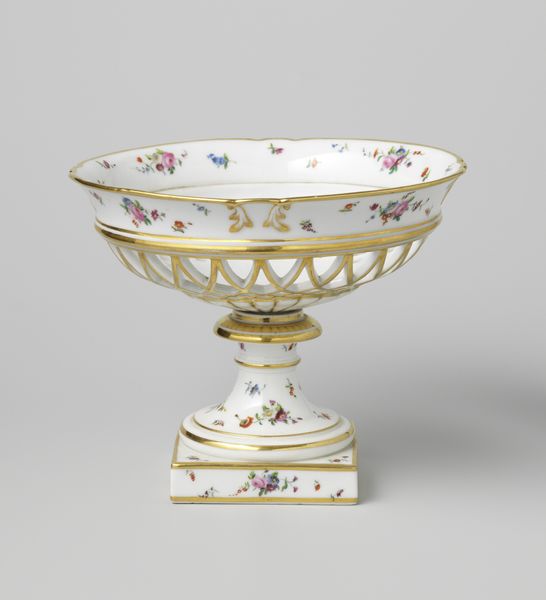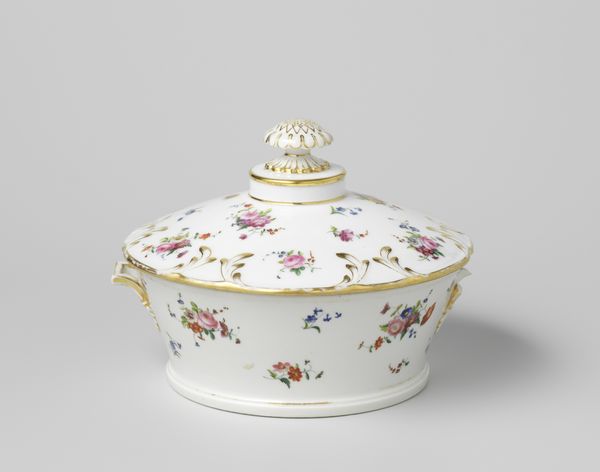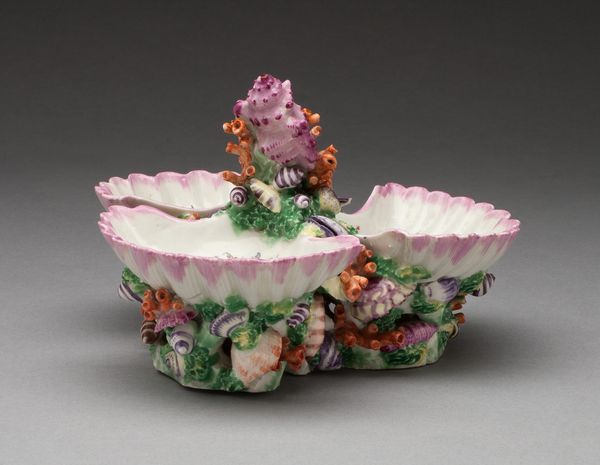
ceramic, porcelain, sculpture
#
ceramic
#
porcelain
#
fruit
#
sculpture
#
decorative-art
Dimensions: Overall: 1 5/8 × 2 3/4 in. (4.1 × 7 cm)
Copyright: Public Domain
Editor: Here we have a porcelain sculpture called "Basket of Fruit," made by the Chelsea Porcelain Manufactory sometime between 1750 and 1760. It’s a small, delicate object brimming with what looks like individually crafted fruits. I’m curious about the significance of such a meticulously made object. How do you interpret this work? Curator: A seemingly simple basket, yet consider what fruit represented then. These weren't just edibles; they were potent symbols. In the mid-18th century, meticulously crafted fruit, like those bursting from this basket, signaled luxury, sophistication, and an embrace of earthly delights. Do you notice the abundance? Editor: I do. The sheer quantity is almost overwhelming for something so small. Is that excess part of the symbolism? Curator: Precisely. Think of the vanitas paintings of the time—the fleeting nature of beauty and life, often represented through decaying fruit. But here, there's no decay. These porcelain fruits are immortalized, reflecting a desire to hold onto beauty, wealth, and perhaps even youth itself. Does that reading shift your initial perception at all? Editor: It does. It’s not just decorative; it’s making a statement about permanence in a world of impermanence. I guess I was focusing too much on the surface charm without thinking about the deeper meanings behind those images. Curator: Indeed. This object offers insight into the mindset of a particular moment, preserving specific ideals and desires. Consider, too, the cultural memory of similar objects passed through generations—the symbolism subtly shifting with time. Editor: That makes me appreciate how even something seemingly straightforward, like a bowl of fruit, can carry so much cultural weight. Thanks for sharing this interesting perspective! Curator: My pleasure. The ability of images to speak across centuries is something truly amazing, isn't it?
Comments
No comments
Be the first to comment and join the conversation on the ultimate creative platform.
